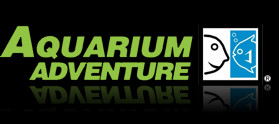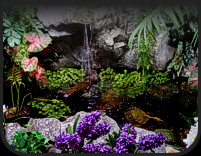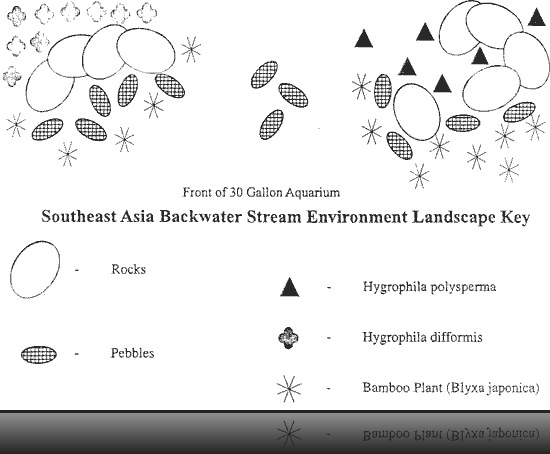 |
home page Aquarium Adventure carries the widest selection of aquariums, fish, corals & plants. |
| ABOUT USAQUATIC PROFESSIONALSLOCATIONSTIP SHEETSFRANCHISE |
 |
||
| We offer everything from do-it-yourself pond equipment and starter sets to full custom installation packages. Our experts can answer those really tough questions about installing and maintaining garden ponds...a service the hardware stores cannot provide. Come visit our store and take a tour! |
||
 |
||
 |
||
|
||
 |
||
Southeast Asia Backwater Stream Environment About the Environment
Recreating the Environment Once the substrate has been added, fill the tank half full of water. Next, add plants and rocks to recreate your Southeast Asian backwater stream environment. Refer to our diagram, in this handout, on how to landscape this niche. Don’t forget to protect the roots of your plants as you anchor them into the substrate. A safe method is to gently ball the roots into your hand and make a loose fist. Using this fist, burrow a pit in the substrate and gently unfold your hand allowing the roots to spread out. Gently cover the roots with enough substrate to hold them down. Finish filling the tank with water. Place the heater in the tank, but do not turn it on at this time. Allow the heater glass to acclimate to the water temperature in the aquarium for one (1) hour before plugging it in. You can camouflage the heater behind plants or rocks.
Filtration System Now, place the aquarium top in position and make any adjustments (cut outs in the back) to accommodate the heater, filter and cords. Turn on the heater and the light. A 10-12 hour light cycle is recommended. Make any final adjustments to the heater in order to stabilize a temperature between 75-78 degrees. All newly set-up aquariums must go through a filter conditioning process in order to sustain fish life. (Please refer to our “New Tank Water Conditions” tip sheet for additional information.) It will take the water approximately 4-6 weeks to condition. During this time, only a small number of fish can be added to the tank. Once the aquarium has been set up and running for a minimum of 24 hours, six (6) 1.5 inch fish per 10 gallons of water can be safely introduced. For this particular niche type Blue Gouramis, Tiger Barbs, and Red Tail Sharks would be good choices to start with. Over the next several weeks, when water quality tests of ammonia and nitrite reach zero, more fish species can be added. Feeding the Fish Water Changes Algae
View All Fish Keeping Tip Sheets
|
||||||||||

